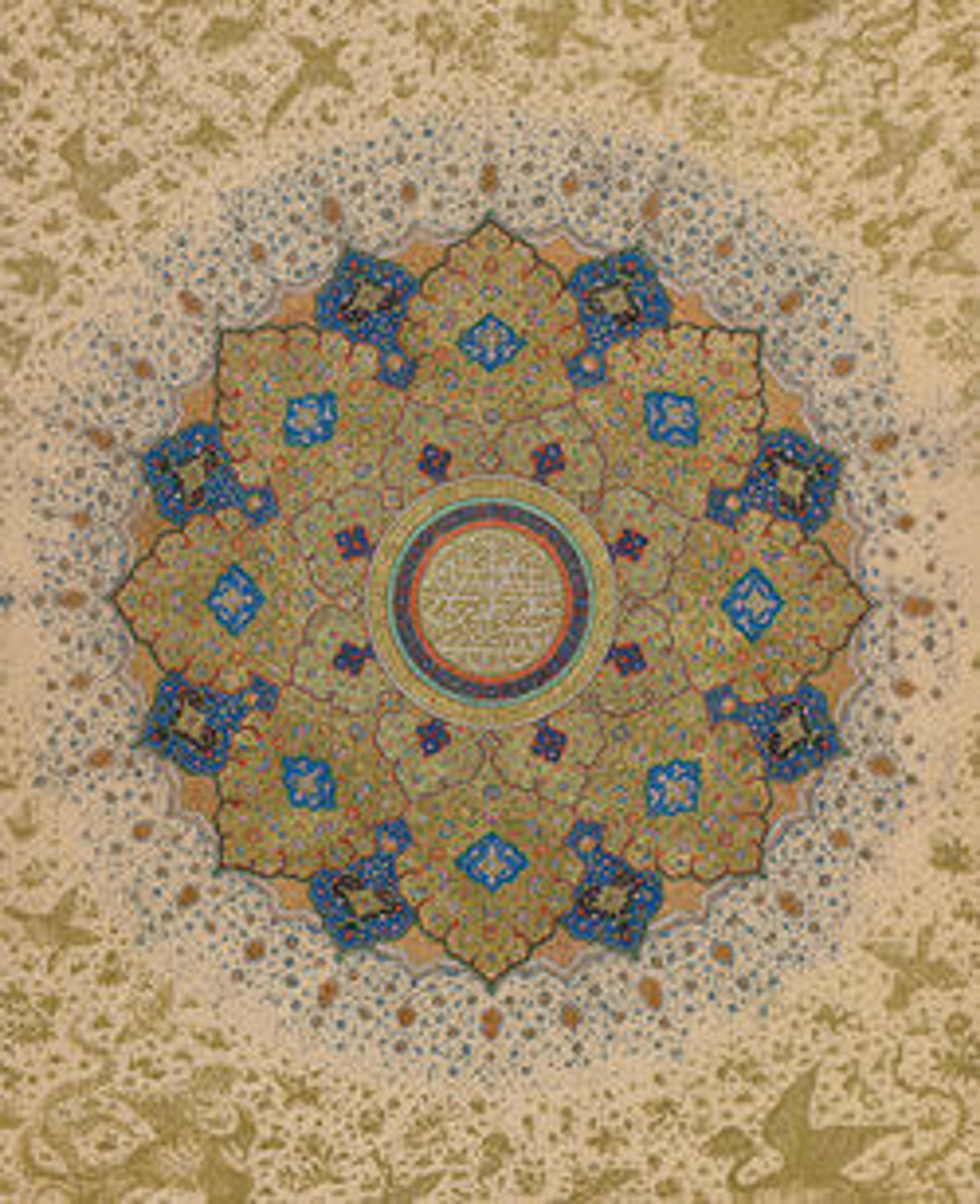Lion and Dragon in Combat
A significant number of works by Muhammad Baqir survive, including several borders and single-page paintings, dated 1764, that come from a dispersed album. Some of these are based on European prototypes while others depict flowers, reflecting the vogue for bird-and-flower paintings that developed in the eighteenth century and was especially popular in nineteenth-century Iran.
While the subject of dragons in combat with real or imaginary animals has a long history in Persian painting, originating with the Mongols in the thirteenth century, the more immediate inspiration for this composition is most likely in the work of the seventeenth-century Safavid artist Mu'in Musavvir. His numerous drawings of lions depict the beasts with large, expressive eyes similar to those of Muhammad Baqir's creature. What differentiates the eighteenth-century drawing from its Safavid forebears is the use of ink wash, a technique borrowed from European sources, to define the musculature of both lion and dragon. Finally, the iconography of this drawing is novel since customarily both dragons and lions are shown defeating a weaker foe. Here, the two are face to face, with the lion drawing first blood but the outcome of their struggle forever uncertain.
While the subject of dragons in combat with real or imaginary animals has a long history in Persian painting, originating with the Mongols in the thirteenth century, the more immediate inspiration for this composition is most likely in the work of the seventeenth-century Safavid artist Mu'in Musavvir. His numerous drawings of lions depict the beasts with large, expressive eyes similar to those of Muhammad Baqir's creature. What differentiates the eighteenth-century drawing from its Safavid forebears is the use of ink wash, a technique borrowed from European sources, to define the musculature of both lion and dragon. Finally, the iconography of this drawing is novel since customarily both dragons and lions are shown defeating a weaker foe. Here, the two are face to face, with the lion drawing first blood but the outcome of their struggle forever uncertain.
Artwork Details
- Title:Lion and Dragon in Combat
- Artist:Painting by Muhammad Baqir (Iranian)
- Date:second half 18th century
- Geography:Made in Iran
- Medium:Ink and watercolor on paper
- Dimensions:Painting: H. 5 1/2 in. (14 cm)
W. 9 in. (22.9 cm)
Page: H. 8 1/8 in. (20.6 cm)
W. 12 1/8 in. (30.8 cm)
Frame: H.. 13 3/4 in. (34.9 cm)
W. 16 3/4 in. (42.5 cm) - Classification:Codices
- Credit Line:Rogers Fund, 1974
- Object Number:1974.20
- Curatorial Department: Islamic Art
More Artwork
Research Resources
The Met provides unparalleled resources for research and welcomes an international community of students and scholars. The Met's Open Access API is where creators and researchers can connect to the The Met collection. Open Access data and public domain images are available for unrestricted commercial and noncommercial use without permission or fee.
To request images under copyright and other restrictions, please use this Image Request form.
Feedback
We continue to research and examine historical and cultural context for objects in The Met collection. If you have comments or questions about this object record, please contact us using the form below. The Museum looks forward to receiving your comments.
